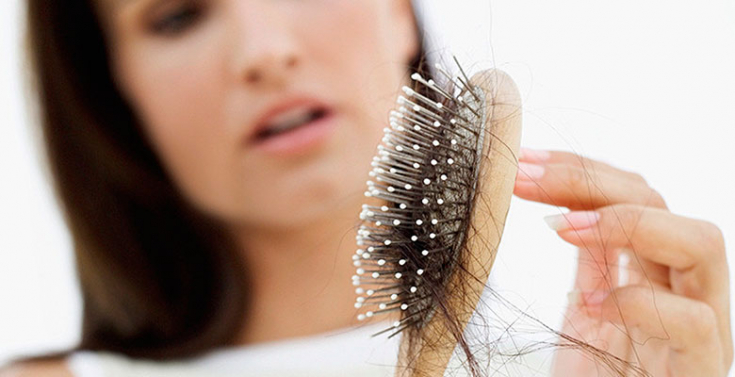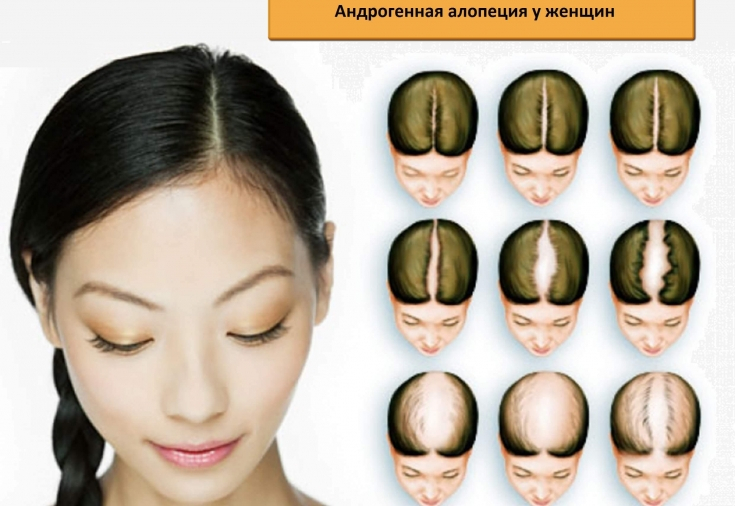Alopecia areata belongs to the group of acquired hair diseases of autoimmune origin. The disease is characterized by hair loss without inflammation, scarring and skin atrophy.
Very often, patchy alopecia causes psychological problems and complexes in patients. Also, the disease is often found in children or young people.
Alopecia areata indicates disorders in the body as a whole and indicates possible problems of an immune or endocrine nature.
On estet-portal.com read about the causes, classification and stages of alopecia areata, as well as about the differential diagnosis of pathology with other diseases.
- Etiopathogenesis: causes and trigger factors of alopecia areata
- Alopecia areata: clinical forms and course of the disease
- Main symptoms and clinical stages of alopecia areata
- Diseases affecting the hair: how to distinguish from alopecia areata
Etiopathogenesis: causes and trigger factors of alopecia areata
The etiology and pathogenesis of alopecia areata have not been fully understood. It is assumed that the disease is based on autoimmune mechanisms. This is evidenced by the presence of abnormal structures of the major histocompatibility complex on the hair follicles.
Follow us on Facebook
Trigger factors for the development of the disease include neurotrophic and endocrine disorders, especially from the pituitary-adrenal system. Burdened heredity, constant stress, chronic and acute intoxication, trauma, the consequences of surgical interventions or the presence of a focal infection can also provoke the appearance of alopecia areata.

Alopecia areata: clinical forms and course of the disease
Alopecia areata can take on a different appearance: from small areas of the scalp – until the entire surface is affected.
The following clinical forms of alopecia areata are distinguished:
• focal (the presence of single or multiple isolated foci of alopecia with rounded outlines on the scalp);
• subtotal (more than 50% of the head area is affected);
• total (the entire scalp is affected);
• universal (lack of hair over the entire surface of the body);
• ribbon-like (hair lesion is determined by the marginal zone in the temples and occiput).
Cold treatment for drug-induced alopecia
Alopecia areata is prone to self-healing or spontaneous remissions. But sometimes the disease is gaining a chronic relapsing character. The prognosis depends on the prevalence of the process and age of the patient.
The main symptoms and stages of the clinical course of alopecia areata
Alopecia areata has a characteristic clinical picture: the appearance of "yellow dots"; in the lesion, as well as hair in the form of an "exclamation mark".
As a rule, the scalp is involved in the pathological process, but the beard in men, eyebrows, hairline on the trunk or limbs can also be affected.
Alopecia areata is characterized by foci of hair loss in a round or oval shape with an unchanged follicular apparatus.
Depending on the activity of the pathological process, there are three stages of the clinical course of alopecia areata:
1. progressive – there is random hair loss and the presence of "loose" hairs on the periphery of bald areas;
2. stationary – there is no clearly defined area of loose hair;
3. regressive – in the foci of alopecia, hair growth is observed, primarily vellus.
Causes of baldness: scientists have discovered new aspects at the cellular level

Also, alopecia areata can be accompanied by damage to the nail plates. Lesions such as punctate depressions, onychorrhexis, longitudinal striation, and undulating appearance of the nails occur.
Diseases affecting the hair: how to distinguish from alopecia areata
Differential diagnosis of alopecia areata, first of all, should be carried out with secondary syphilis: in this case, you need to look for other signs of syphilis and conduct a serological study.
Alopecia areata can resemble lupus erythematosus: laboratory tests are carried out to detect antinuclear antibodies to rule out an autoimmune disease.
Trichophytosis of the scalp is characterized by the presence of inflammation and "stumps"; - hair broken off at a level of 2-3 mm from the skin surface.
Alopecia areata can often be confused with androgenetic alopecia, which is characterized by progressive thinning and diffuse hair loss.
Androgenetic alopecia is accompanied by signs of hirsutism and acne, as well as increased hair growth in the telogen stage, which is determined using a trichogram. eyelashes, and broken hairs are at different levels.
Thank you for staying with estet-portal.com. Read other interesting articles in the "Trichology" section. You may also be interested in:
No hair loss – no: modern approaches to the treatment of alopecia






Add a comment